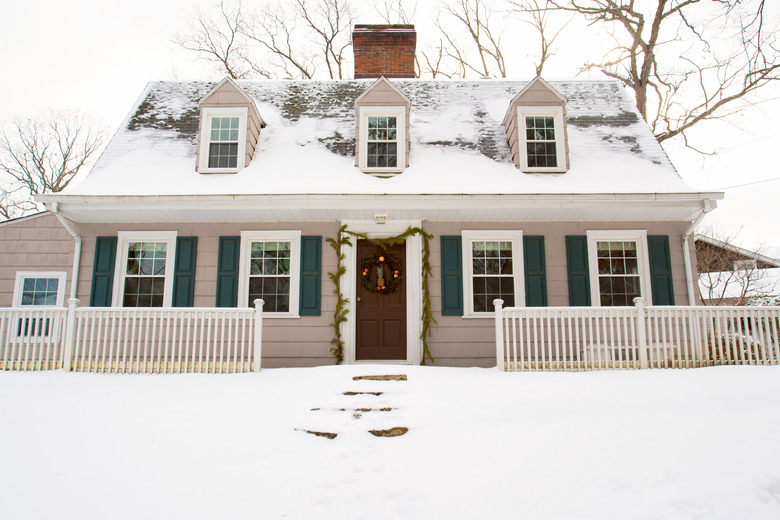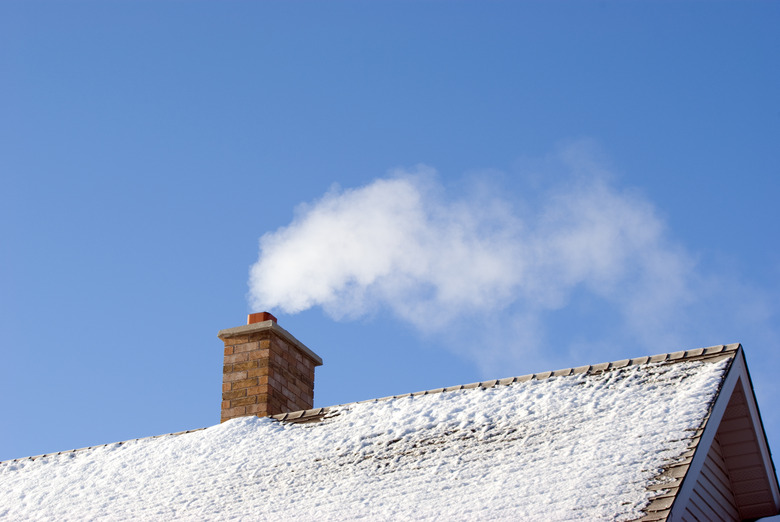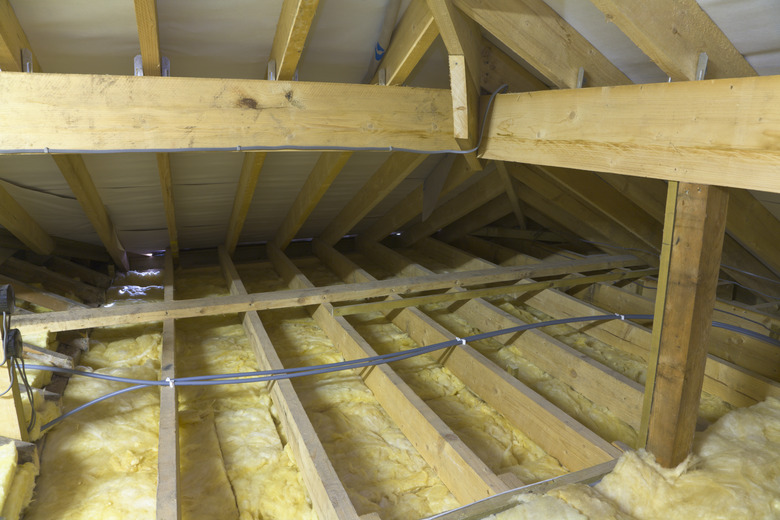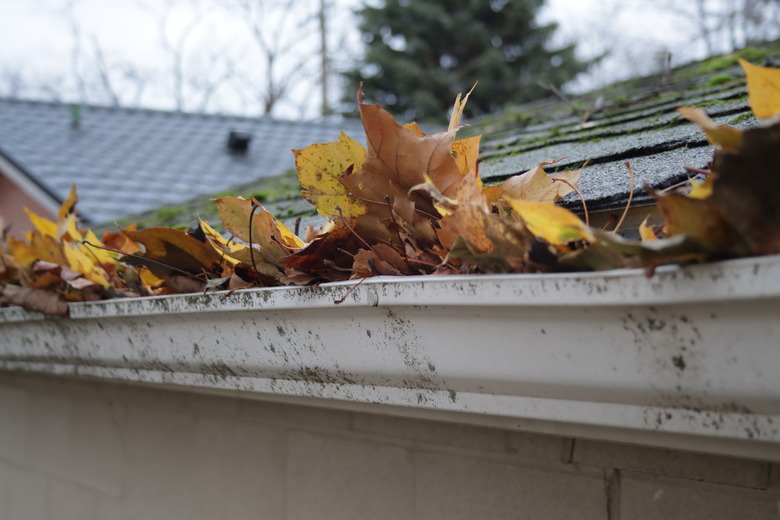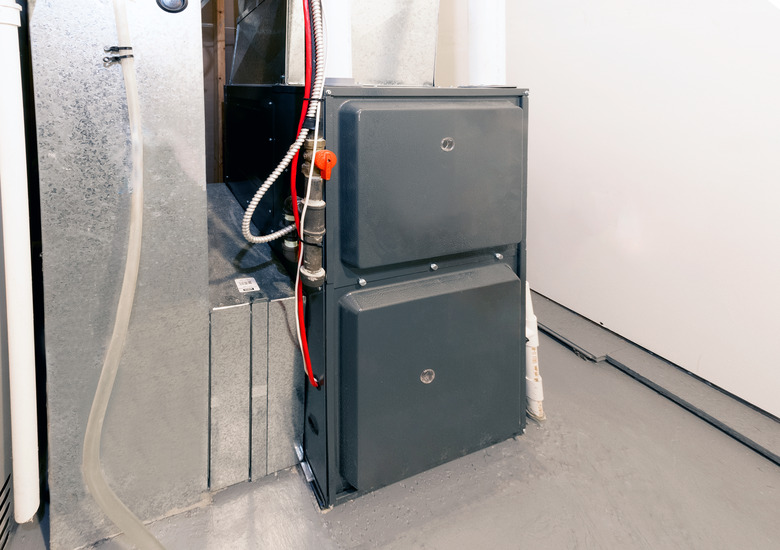How To Winterize A House, According To A Pro
We may receive a commission on purchases made from links.
Winterizing your house may not be on the top of your priority list for the season, but it's a crucial part of keeping your home maintained and free of big, expensive problems like leakage and energy inefficiency. To help homeowners learn what the most important tasks are this winterizing season, we turned to a pro for advice.
When it comes to winterizing a house, Michael DiMartino knows his stuff. A senior vice president of installations at Pennsylvania's Power Home Remodeling, DiMartino has been in the residential remodeling and construction industry for over 20 years. He's also a homeowner and landlord who has been winterizing his own properties in preparation for chilly Northeast winters. He shared his best tips with Hunker on what homeowners should do to protect their houses from cold winter weather.
1. Take a Look at the Roof
1. Take a Look at the Roof
DiMartino says, "The roof is the most important part of the home." DiMartino says that while most people only think about their roof in rainy weather, the roof can be particularly vulnerable during winter storms. It's important not to forget this step when considering how to winterize a house. In freezing temperatures, ice buildup in the gutters can back up under the roof shingles, where it can melt and cause water damage to the roof sheathing, attic insulation, and ceiling drywall under the attic.
If your roof is over 10 years old, DiMartino recommends having a qualified roofing professional inspect it to ensure it is not vulnerable to winter weather damage. The expert should look at the shingles themselves and check the attic for water damage, especially in areas prone to leaks, like around chimneys and roof vents. If your roof is still in good shape, the roofer should tell you how soon to have it checked again.
2. Inspect Your Attic Insulation
2. Inspect Your Attic Insulation
Twice a year, take the time to inspect the insulation in your attic. Check in the fall before freezing temperatures set in to ensure you'll be warm enough and then recheck it in the spring after a heavy rain storm to check for leaks. Pay extra attention to areas around chimneys and HVAC units, as these are more prone to leaks. Remember that heat rises, so attic insulation is critical to preventing heat loss and keeping your home cozy all winter long. "You want to be as energy efficient as possible, especially with energy rates going up," DiMartino tells Hunker.
If you have fiberglass batts that are damaged, you can remove and replace them yourself. Be sure to put the discarded batting in contractor bags and take them to a disposal center that will accept them, since not all do. When you discover you don't have enough insulation, you can install more yourself, as this is a home improvement project you can easily DIY to keep your home warmer. Whenever you're handling fiberglass batting, always use proper safety equipment, including safety goggles, gloves, a respirator mask, long sleeves, and pants.
While you can DIY batting installation, it's best to hire pros if you want to add spray-in insulation. The same goes for adding insulation to your exterior walls since this usually requires filling wall cavities with spray-in insulation.
3. Clean Your Gutters
3. Clean Your Gutters
Your gutters aren't just important during the rainy season but also in freezing temperatures. If they're not draining properly, trapped leaves, grime, and water can weigh gutters down, causing them to loosen or pull away from the fascia boards, possibly leading to water getting behind the siding. Clogged gutters also are primed to form ice dams, since they're full of water waiting to freeze.
Clogged gutters also threaten your home because rain water and snowmelt are not channeled away from the house and foundation, and water can collect in the ground directly next to your home. Saturated soil can damage your foundation and bring water into the basement or crawl space.
Clean your gutters at least twice a year: once after the leaves fall in autumn and again in spring after the frost has thawed. Gutter guards make the job a little easier by keeping most of the leaves out of the gutters.
4. Check Your Windows and Doors
4. Check Your Windows and Doors
DiMartino says older homes with original windows that are single-pane or have drafty wooden frames are poor insulators and may be susceptible to water damage. These windows should be replaced to protect your home from cold air, heat loss, and moisture intrusion. Similarly, if you have an old, drafty front door, it may be time to replace it. After all, as DiMartino points out, "Drafty windows and doors do the opposite of what they're supposed to do."
If you do invest in new windows, he recommends always working with a well-respected and highly rated contractor because even modern premium windows that are wrongly installed still don't work as well as they could. He explains that windows need to be properly capped or flashed when they are installed to keep out moisture and prevent water damage in your home. Window units also need to be properly air-sealed to ensure the window performs as it should.
Assuming your windows and doors don't need to be replaced, check the weatherstripping and caulking around them twice a year unless your doors or windows are reasonably new. If any light comes in around the doors or windows, fill these gaps or cracks with caulk.
You can further improve the insulation around your home by installing insulating curtains or drapes on the windows and using door sweeps at the bottom of your doors.
5. Have Your Heat Sources Inspected
5. Have Your Heat Sources Inspected
Whether you have a boiler or a furnace, you should hire a professional to inspect and maintain your heating system once a year. Regular maintenance keeps your heating system working optimally, lowering your energy bills, and reducing the risk of malfunctions. An expert can ensure your boiler doesn't suffer from poor water quality, leaks, or insufficient water pressure, any of which can compromise its performance.
For a furnace, a professional will both clean and inspect the unit to help prevent possible issues with the filter, fan, pilot or ignition, and heat exchanger. Aside from getting someone to check the heating unit every year, furnace owners should also take the time to change 1- and 2-inch-thick filters every one to three months, 4-inch filters every six to nine months, and 6-inch filters every nine to 12 months.
If you have a wood-burning fireplace or wood stove, don't forget to have the chimney serviced yearly by a professional. A chimney sweep should thoroughly clean the chimney flue and inspect the firebox, damper, and smoke chamber as well as the exterior chimney masonry, roof flashing, and chimney crown.
When Should You Winterize?
When Should You Winterize?
Unless otherwise indicated, DiMartino suggests checking on these issues in late summer or early autumn, long before the first snowfall. Starting early will help ensure your home stays comfortable even as temperatures drop. If you need to hire a professional to perform any inspections or maintenance, getting ahead of the fall busy season also ensures you aren't left paying extra for rush service or waiting for ages to get an appointment.
If you need repairs completed, DiMartino warns you not to procrastinate or ignore the problem, as it will only get worse, and prices aren't likely to go down. "Being in this business as long as I have, I've only seen costs rise, especially during the pandemic." He also tells Hunker that even if you can't have repairs addressed immediately, you should at least call a few companies to get a free repair estimate. Since most companies guarantee their prices for at least a year, you'll get the rate locked in even if the company's prices increase a few months later.
How to Winterize the Inside of a House
How to Winterize the Inside of a House
DiMartino's company specializes in exterior home remodeling projects, but he does have some tips on how to winterize a house on the inside. He suggests increasing insulation inside your home by putting rugs on the floor, using ceiling fans on reverse to circulate warm air throughout your living spaces, and insulating water pipes to prevent them from bursting.
After each snowstorm, he also reminds homeowners to be diligent about shoveling their sidewalks and salting the pavement so that no one gets hurt. "There is a lot of liability for ignoring these issues," he warns.
Tip
Additionally, if you will have a vacant home for the cold weather season, be sure not to turn your thermostat all the way down. This could cause harm to your home's systems and appliances if there is a cold snap — making all the money you saved on your heating bill a moot point.
